 McLaren Automotive is a British automaker and was once known under the name McLaren cars. The company was started by Bruce McLaren who was a racecar driver himself. The company is currently based in Woking, Surrey at the McLaren Technology Center. They are best known for their line of luxury sports cars that are priced higher than your average sports car. Most of their components are produced in-house. As of the summer of 2017, they also became a 100% subsidiary under the McLaren Group.
McLaren Automotive is a British automaker and was once known under the name McLaren cars. The company was started by Bruce McLaren who was a racecar driver himself. The company is currently based in Woking, Surrey at the McLaren Technology Center. They are best known for their line of luxury sports cars that are priced higher than your average sports car. Most of their components are produced in-house. As of the summer of 2017, they also became a 100% subsidiary under the McLaren Group.
A Brief History
Bruce McLaren
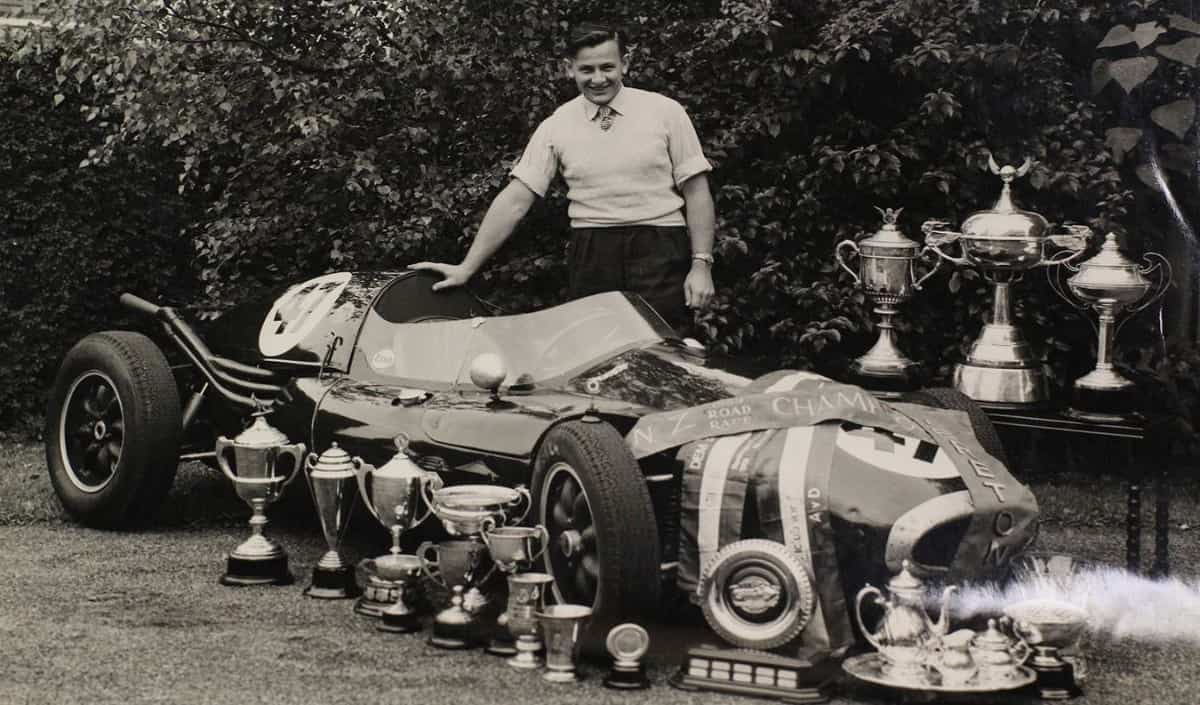 The Formula One founder was Bruce McLaren. He was born in 1937 and grew up around cars in New Zealand. When he was 15 years old, he joined a local hill climb with the Austin 7 Ulster. This was his first win. Then, in 1958, he joined the ‘Driver to Europe’ trip to the United Kingdom. This program was designed to bring New Zealand and Australian racers to competitions in Europe.
The Formula One founder was Bruce McLaren. He was born in 1937 and grew up around cars in New Zealand. When he was 15 years old, he joined a local hill climb with the Austin 7 Ulster. This was his first win. Then, in 1958, he joined the ‘Driver to Europe’ trip to the United Kingdom. This program was designed to bring New Zealand and Australian racers to competitions in Europe.
At the time, Jack Brabham showed McLaren Cooper Cars. It was a smaller race team based in Surbiton, Surrey. In 1958, McLaren began his F1 career and won the US Grand Prix just a year later when he was 22. He continued racing with Cooper for another seven years. During that time, McLaren won three more Grand Prix events as well as some additional races with Aston Martin and Jaguar vehicles. In 1966, he won the 24 Hours of Le Mans with a Ford.
In 1963, McLaren started Bruce McLaren Motor Racing. The following year, they produced the first McLaren race car, named the M1A. There were only 24 of these vehicles ever made. The next version, the M1B, had its turn at the Monaco Grand Prix.
Once McLaren won some victories in the F3, he began designing an M6GT-registered OBH 500H prototype. It was a lighter weight sports car that featured a 165 mph top speed plus a 0 to 100 mph time of just eight seconds. McLaren died in 1970 during a car accident and never saw the prototype through completion.
The Growth of a Company
The company then merged in 1980 with Ron Dennis’ Project 4 Racing team. That’s when John Barnard, a designer, became interested in utilizing a carbon fiber composite. While it was used in aerospace production, it hadn’t made its way into racing car manufacturing yet. The MP4/1 used carbon fiber and provided a rigid, safe vehicle into Formula 1.
 In 1988, Gordon Murray, Team Principal, and Dennis began developing new vehicles. In 1992, they released the McLaren F1. Production only ran 106 units. From 1994 through 2010, the company registered “dormant” prior to founding McLaren Automotive. This new company had been separate from the existing companies in order to provide investments in this newer venture. Then, in 2010, McLaren Automotive took the place of McLaren Cars after a brief partnership with Mercedes-Benz.
In 1988, Gordon Murray, Team Principal, and Dennis began developing new vehicles. In 1992, they released the McLaren F1. Production only ran 106 units. From 1994 through 2010, the company registered “dormant” prior to founding McLaren Automotive. This new company had been separate from the existing companies in order to provide investments in this newer venture. Then, in 2010, McLaren Automotive took the place of McLaren Cars after a brief partnership with Mercedes-Benz.
The company then produced the 12C starting in 2011 with a Spider edition in 2012. Starting in 2013, they also had the P1 limited-run supercar, but that only lasted through 2015. Because the company wanted to release a new car each year, they also went ahead with the 650S Coupe and Spider in 2014. Following that, the McLaren 540C and 570S were produced in 2015.
In 2016, the company released the P1TM and also began working on a battery geared toward Formula E. The company also starting using range names for their vehicles. They either fell into the Super, Sports, or Ultimate Series. There were also derivatives assigned to each car such as S, C, and LT.
In 2017, Ron Dennis sold off his shares for the McLaren Technology Group and McLaren Automotive.
Sports Series
McLaren’s Sports Series contained the entry-level vehicles such as the 570C Coupe, 570S Coupe, 570S Spider, and the 570GT. This Series focused heavily on engaging the driver with a car that was usable but still high-performing. All of the vehicles in this Series feature a carbon fiber chassis.
Super Series
This is the core of the McLaren models and has featured the 650S, 675LT, and the 720S. The 650S entered production in 2014 and was unveiled at the Geneva Motor Show. It was available as both a Spider or a Coupe and featured a 3.8-liter twin-turbo V8 engine that produced 647 horsepower.
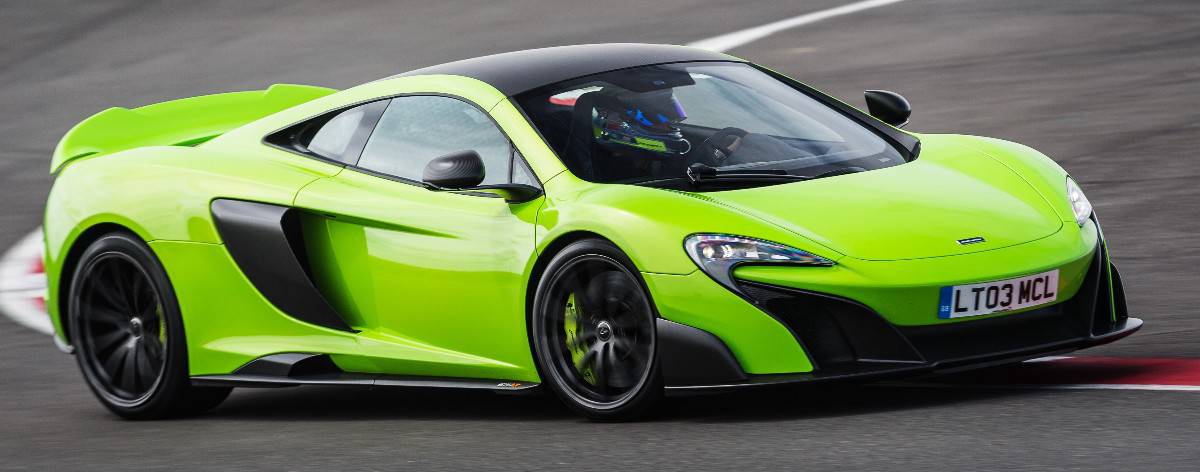 The McLaren 675LT started production in 2015 and was the first with the Longtail badging. The goal behind the design was to create a road legal vehicle that was also track-focused. It also had the 3.8-liter V8 engine and reached 60 mph in just 2.9 seconds. There have only been 500 units produced globally.
The McLaren 675LT started production in 2015 and was the first with the Longtail badging. The goal behind the design was to create a road legal vehicle that was also track-focused. It also had the 3.8-liter V8 engine and reached 60 mph in just 2.9 seconds. There have only been 500 units produced globally.
In 2016, the company took the 675LT and created an HS (High Sport) model. While it featured the same engine, it generated 679 horsepower. There were only 25 of these vehicles produced.
At the Geneva Motor Show in 2017, the company unveiled the McLaren 720S. It had a 4.0-liter twin-turbo V8 engine and 710 horsepower. With this engine, it hit 60 mph in only 2.8 seconds and achieved a top speed of 212 mph.
Ultimate Series
This Series features the most exclusive line of vehicles from McLaren. The first to join the series was the McLaren P1 in 2013. The final car from its limited run of 375 cars ended in 2015. It featured an IPAS (Instant Power Assist System) which was a mixture of gasoline and electric. The engine inside was the same 3.8-liter twin-turbo V8 that others had, but it was paired with an electric motor as well. The combined power of this setup was 903 horsepower.
The company also launched a track-only derivative of the P1 and named it McLaren P1 GTR. This concept car was showcased at the Pebble Beach Concours d’Elegance in 2014. It was made available only to customers that owned a McLaren P1.
The McLaren Senna was named after Ayrton Senna who was a three-time Formula 1 world champion. It’s primarily based off the 720S but features modified versions of the twin-turbo engine and carbon fiber chassis. It had a 4.0-liter V8 engine with 789 horsepower. 500 units were produced and sold out relatively quickly.
Alternative Propulsion Methods
The McLaren P1, which was unveiled at the 2012 Paris Motor Show, is a limited production plug-in hybrid model sports car. It was released in October 2013, but all 375 produced sold out within the month. 34% of the units sold went to the United States while another 26% was to Europe.
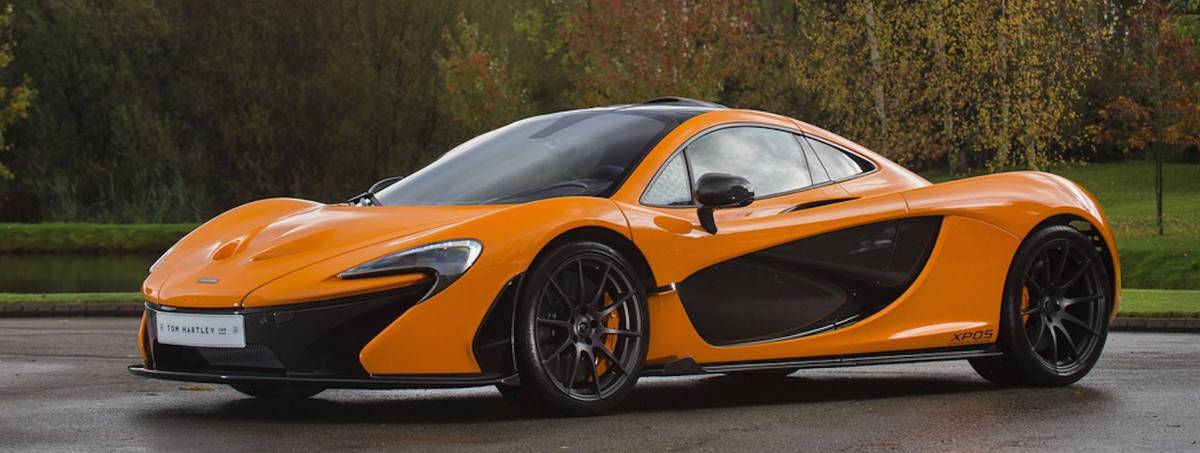 The P1 was the successor to the McLaren F1. It combined Formula 1 technology with hybrid power but didn’t have the three-seat design as the F1 did. It was also a rear-wheel-drive, mid-engine sports car made from carbon fiber. In addition, it featured the MonoCage, which was McLaren’s safety cage roof structure concept.
The P1 was the successor to the McLaren F1. It combined Formula 1 technology with hybrid power but didn’t have the three-seat design as the F1 did. It was also a rear-wheel-drive, mid-engine sports car made from carbon fiber. In addition, it featured the MonoCage, which was McLaren’s safety cage roof structure concept.
The main competition to the P1 was the Porsche 918 and the LaFerrari. Both offered similar performances and specifications. When raced around the Silverstone circuit, all three vehicles finished within a half second of one another with the P1 winning.
There was also a track-focused P1 created, called the P1 GTR. It was released at the Geneva Motor Show of 2015, but production was limited to just 40 vehicles.
Safety and Crash Ratings
The two main agencies in charge of evaluating cars for crashworthiness in the United States have not tested McLaren vehicles. Both the NHTSA (National Highway Traffic Safety Administration) and the IIHS (Institute for Highway Safety) have not rated the McLaren line of cars.
It’s not unusual for lower volume vehicles to go untested. However, in 2007, there was a rare test of the F1. When it crashed at 40 mph, surprisingly the carbon fiber chassis absorbed all the impact. The rest of the car was completely intact. It was, at the time, the only car that was ever driven away from a MIRA crash test.
The problem with that crash test is that most people probably don’t drive the McLaren at 40 mph. Up that speed to its top performance of 231 mph, and it probably wouldn’t have been driven away.
Safety Equipment
McLaren cars are devoid of any kind of active safety equipment. That’s because lane-keeping assistance programs, blind-spot monitoring, and most other driver aids would add weight to the lightweight powerhouse. The company would prefer to be a high-performing car manufacturer than a safe one.
These cars weren’t made for families either. You surely won’t find a child-seat attachment point. In addition, there isn’t a spare tire on board. If you get a flat, you’ll be sitting on the side of the road.
There are some airbags included in the cars and a sophisticated setup for electronic stability control. There are also anti-lock brakes incorporated and a backup camera that has gridlines which move around with the steering wheel. That design is helpful when in reverse.
Safety Recalls
The company doesn’t make enough cars to be hit with massive recalls, but they’ve still had their share of issues over the years. In 2016, the McLaren P1, built between 2013 and 2015, was recalled. This included a total of 122 vehicles. The reason for the recall was due to a secondary hood latch which might fail. If it failed, the hood could inadvertently open if the primary lock were to be accidentally engaged as well. Imagine the consequences if the car was doing its top speed of 220 mph when this happened.
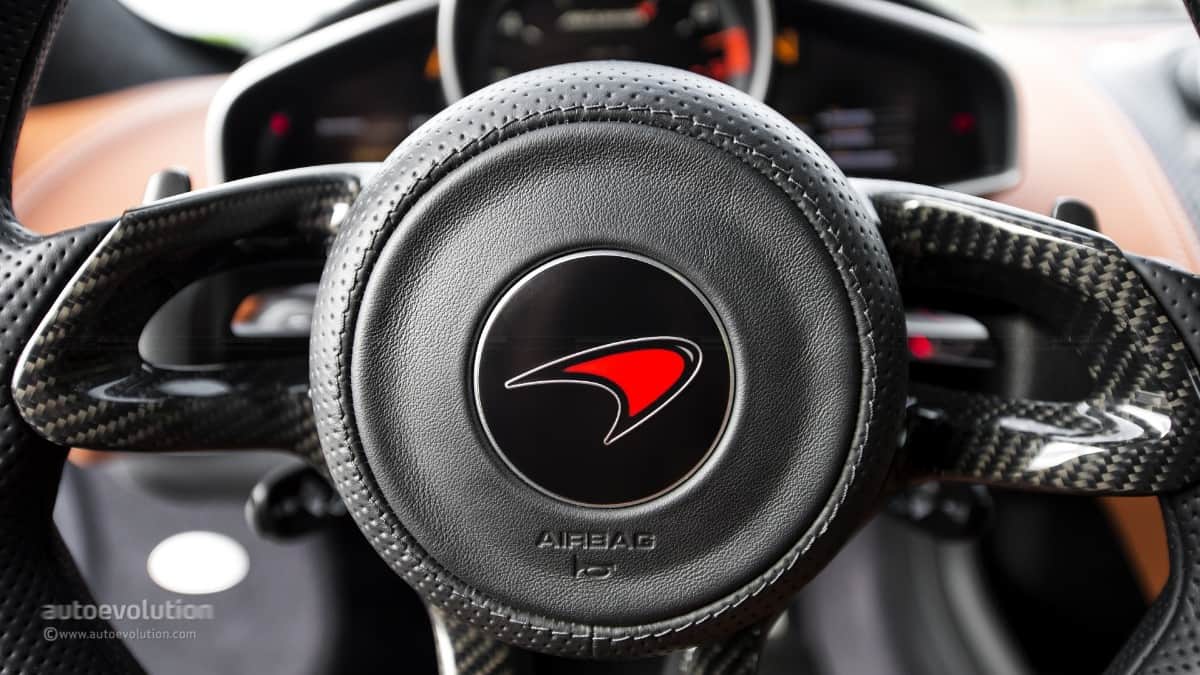 In addition to that, McLaren continued to sell cars that contained Takata airbags even though they knew there would be a recall at some point. Their reasoning for still using Takata was that the company was able to supply McLaren with enough airbags. As a result, every model they’ve built is being recalled, all the way back from the 12C.
In addition to that, McLaren continued to sell cars that contained Takata airbags even though they knew there would be a recall at some point. Their reasoning for still using Takata was that the company was able to supply McLaren with enough airbags. As a result, every model they’ve built is being recalled, all the way back from the 12C.
Consumer Satisfaction Reports & Dependability Ratings
Many customers are thrilled with their McLaren vehicle and some even feel that they are better than the Italian supercars. As far as dependability goes, the company does supply consumers with a warranty to cover any issues that might occur. This is important considering that parts for the McLaren can be costly.
Awards
Throughout the years, the McLaren company has received numerous awards for their manufacturing, performance, and style. Here are some of the most notable awards.
In 2012, the McLaren 12C achieved the title of ‘Car of the Year’ during the Middle East Motor Awards. In 2015, the McLaren company was awarded with ‘Manufacturer of the Year’ from Top Gear. Just a year later, in 2016, the McLaren 570s took home the ‘Best Driver’s Car Award’ from Motor Trend.
2017 was a good year for the company because they won two prestigious awards. The first was for the McLaren 570s which won the ‘Best Performance Car’ during the Digital Trends Car Awards. The other was for the McLaren 720s which won the ‘Scottish Sports Car of the Year’ from the Scottish Motoring Writers.
In 2018, the McLaren 570S Spider also took home the Technological Hedonism Award during GQ’s annual car awards.
The Relationship Between Mercedes and McLaren
There’s a deep history that runs between the Mercedes brand of vehicles and McLaren. Mercedes-Benz is a German automaker run by Daimler AG while McLaren Automotive is a British manufacturer. Together, they’ve worked to design and produce many cars that meet the ever growing needs of today’s world. This collaboration has led to the advancement of powerful engines for both parties.
The Companies and Formula 1
If you look at Formula 1, you can see the relationship between these two companies. McLaren was capable of building a sports car but lacked the skills necessary to create the engines. That’s why they decided to buy them instead. Mercedes-Benz engines were their first choice and they were used for a good amount of time.
The arrangement between the two companies was interrupted several times; the two did renew a deal during the 2016 season.
Mercedes-Benz McLaren SLR
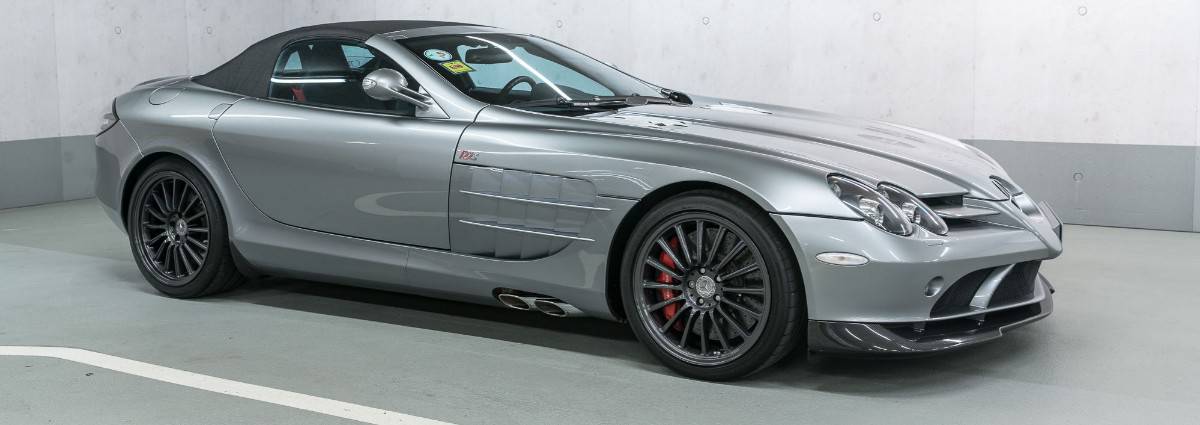 The Mercedes-Benz McLaren SLR was developed by both brands. It sold between 2003 and 2010. During the time that the SLR was produced, Mercedes held a 40% stake in McLaren. SLR stood for Sport Light Racing and was available as either a sports coupe or roadster.
The Mercedes-Benz McLaren SLR was developed by both brands. It sold between 2003 and 2010. During the time that the SLR was produced, Mercedes held a 40% stake in McLaren. SLR stood for Sport Light Racing and was available as either a sports coupe or roadster.
The car was expensive and targeted at business moguls plus CEOs. A new model would sell for up to half a million dollars. It featured a powerful engine, allowing it to hit 60 mph in a mere four seconds. It also featured a top speed that went over 200 mph. The sports car also had doors that opened forward and upwards, like a swinging action. The interior came complete with carbon-fiber and aluminum trim which made it a top-notch luxury vehicle.
Mercedes-Benz AMG
Mercedes took over the AMG line in 1999 and eventually owned the brand in full in 2005. All of the AMG vehicles feature an aggressive bold style, superior stability, impressive features and excellent handling. When the AMG tag is on a Mercedes brand vehicle, it denotes that it’s a high-performing, expensive line.
Mercedes-Maybach
Another collaboration between the two companies occurred with the Maybach. This ultra-luxury car was founded originally in 1909 but was acquired in 1960 by Daimler. It’s now part of the S-Class line and has earned its reputation for being one of the best in performance and luxury.
Unreleased Vehicles
The partnership also led to several other cars that were proposed but never created. The P9 was a mid-engine supercar. There was also the less expensive version the P8, or otherwise known as SLS. It was to compete with the Bentley Continental GT, Aston Martin DB9, and Ferrari F430. The P10 would’ve been offered as an SLR replacement.
Plans for all three of these cars were aborted during 2005. Rumor has it that Mercedes found the projects to be too costly.
Pure McLaren Arctic Experience
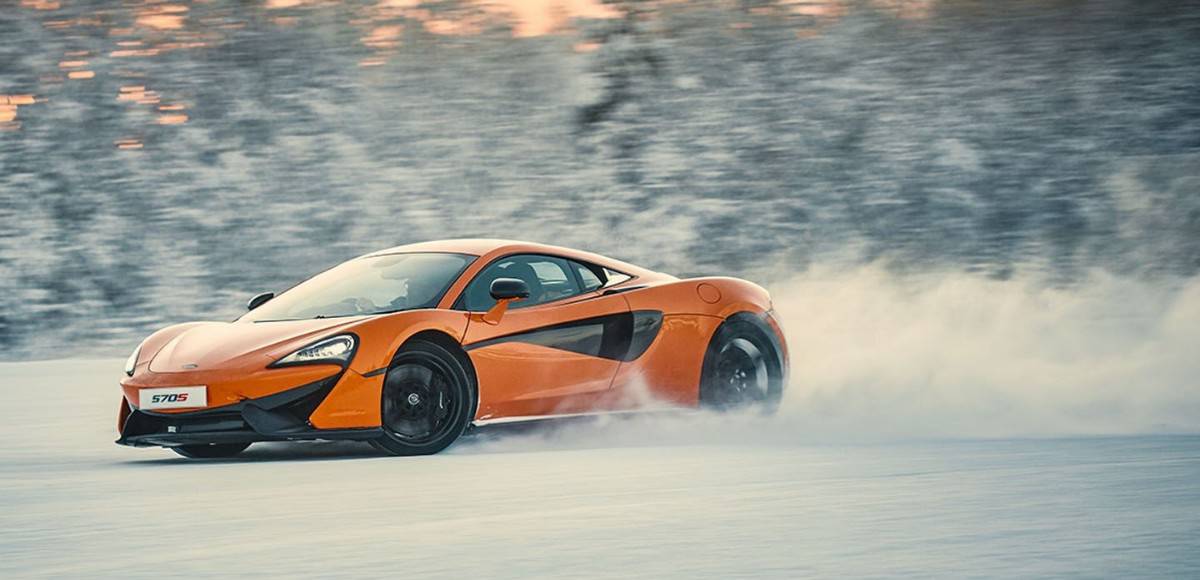 McLaren offers something that most automakers wouldn’t dream of giving their customers. About 200 miles north of the Arctic Circle, in Northern Finland, you’ll find the Pure McLaren Arctic Experience.
McLaren offers something that most automakers wouldn’t dream of giving their customers. About 200 miles north of the Arctic Circle, in Northern Finland, you’ll find the Pure McLaren Arctic Experience.
Participants are allowed to test out the agility and power of a 570S with the help of some professional drivers. The ice tracks are specifically created for McLaren and offer the ultimate testing grounds. You start by learning the basics and then trying it out on a variety of snow and ice configurations.
With the frozen tundra to ride upon, the slightest move in steering or adjustment to the throttle causes the car to drift. The coaches are there to help drivers understand how to control this movement and use it to make the car function better.
Once that’s mastered, drivers take on the more complicated routes. These tracks are filled with turns and twists that put the drifting action to the test. These tracks head over the Scandinavian hills and are used by many world-class rally drivers.
Snapshot of the Company
The McLaren Technology Center opened its doors in 2004. There’s also a McLaren Production Center that was created in 2011. These two facilities are connected to each other through a subterranean walkway. These are located on a 123-square-acre plot in Surrey, England.
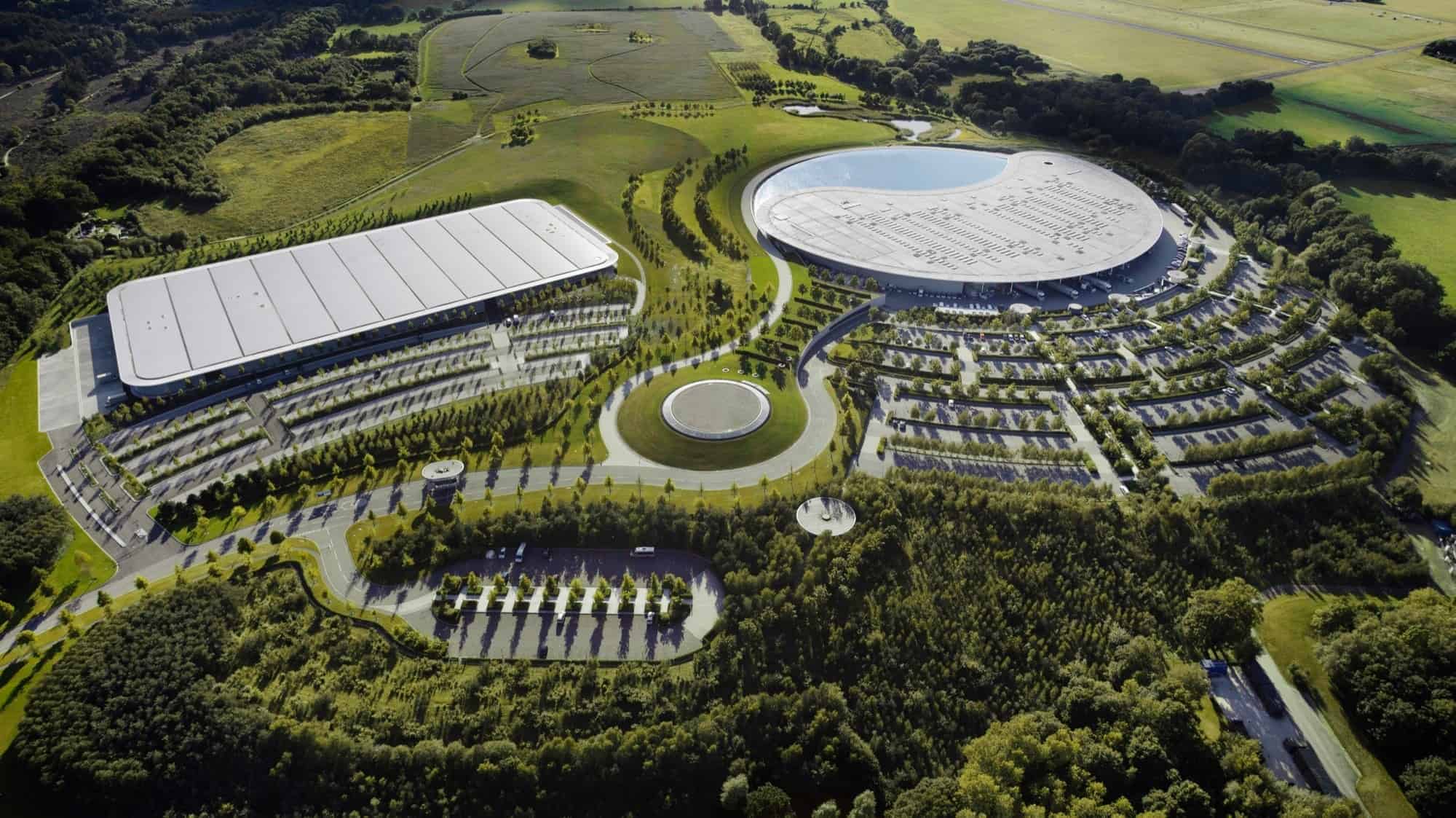 In total, there are four buildings located on the complex. The other two are the McLaren-GSK Centre for Applied Performance and the McLaren Centre for Applied Technologies. The main structure of the complex is shaped in a semi-circular fashion and features a glass-walled design. There are approximately 1,000 employees working in this building. The McLaren Production Center is a two-story building used to manufacture cars.
In total, there are four buildings located on the complex. The other two are the McLaren-GSK Centre for Applied Performance and the McLaren Centre for Applied Technologies. The main structure of the complex is shaped in a semi-circular fashion and features a glass-walled design. There are approximately 1,000 employees working in this building. The McLaren Production Center is a two-story building used to manufacture cars.
Their complex also consists of an artificial lake which cools the building. They also have their own wind tunnel which they use to test setups and aerodynamic parts. Inside the facilities, the company operates labs, design studios, production facilities, a fitness center, swimming pool, and cafeteria.
The McLaren Automotive company plans to open the McLaren Composites Technology Center in 2020. It’s located at the Advanced Manufacturing Park and will be responsible for building carbon fiber chassis for future cars. It also allows for more control over the design and development.
The Chief Executive Officer of McLaren is Mike Flewitt since 2013. Previously, he was the Chief Operating Officer. He’s in charge of the manufacture, global distribution and development of the McLaren sports cars which include the P1 and the 12C. Before working for the company, he held positions in the Ford Motor Company, Ford of Europe, TWR Group Limited, Rolls-Royce, Bentley Motor Cars, and AutoNova AB.
Annual Sales
In 2016, McLaren achieved their fourth straight year of record-breaking sales. They sold 3,286 vehicles which was a large increase over the 1,654 cars sold in 2015. That gave them a 70% increase in profit with sales revenue of $844 million.
2016 marked the first full year of the Sports Series of vehicles. This included the 570S and 570GT. Most of the company’s sales occurred in North America with more than 1,100 deliveries. This was 106% increase over the previous year. On top of that, the Asia Pacific region also grew 90% in the year.
Business Operations
There are numerous divisions to McLaren Automotive. McLaren Special Operations was officially launched in 2011 during the Pebble Beach Concours d’Elegance, but they had been in existence for more than 20 years. This branch provides made to order personalization service for customers. Today, the Special Operations division offers five different tiers. To completely tailor any McLaren car to the wishes of a customer, the following levels of MSO exist.
- Defined
- Bespoke
- Limited
- Heritage
- Programmes
MSO Defined is the first tier and offers factory-fit options for vehicles. This includes the lightweight carbon fiber rear deck lid, extended side door blades, and carbon fiber rear diffuser.
MSO Bespoke allows customers to modify vehicles by their personal preferences. This offers a limitless scope to what could be accomplished. Some examples include the exterior paint colors, personalized interiors, and new designs based on a customer’s requirements. Since the 650S entered production, around 20% of the models contained some sort of MSO Bespoke equipment. In comparison, 95% of the P1 hypercars are personalized.
MSO Limited produces the special edition and limited-run vehicles. In 2013, they celebrated the 50th anniversary of the cars by creating a McLaren 50 12C commemorative model. There were only 100 made between the 12C and 12C Spider edition. They all featured carbon ceramic brakes, increased downforce, an anniversary plate, and lightweight wheels. They’ve also created 50 MSO 650S vehicles in a coupe or spider model in 2014. Then, in 2015, the company produced a 650S Le Mans to celebrate the 20th anniversary of the 1995 24 Hours of Le Mans victory.
MSO Heritage maintains and personalizes the F1 for owners while MSO Programmes handles managing the P1 GTR assembly and track events.
Logo
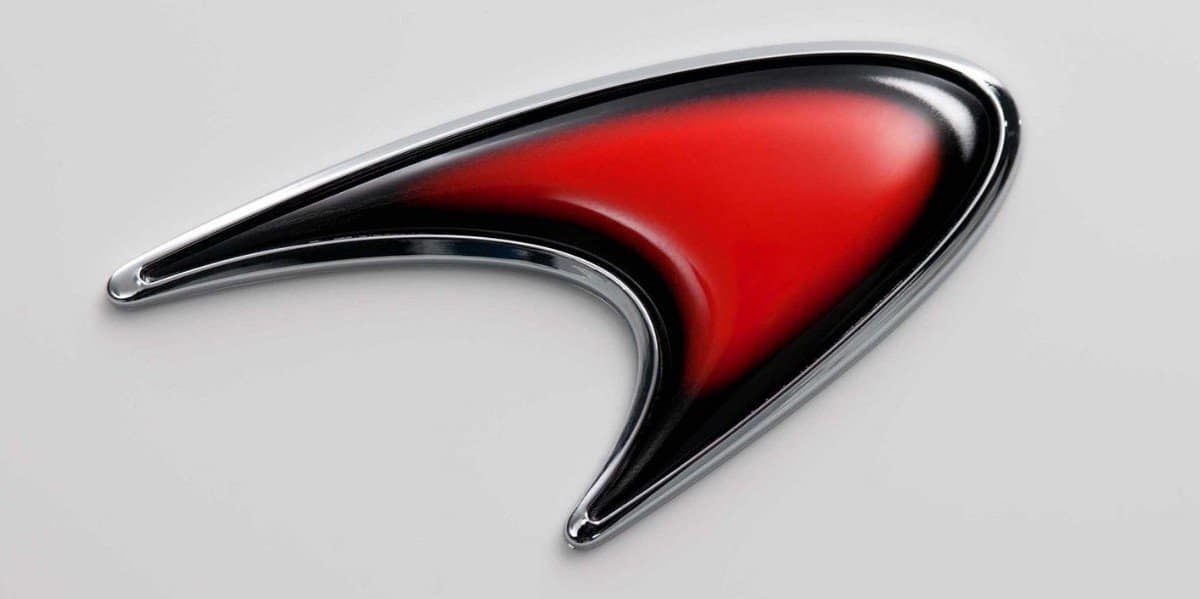 The first revamped logo appeared in 1997. It featured the streamlined speed mark that the company says looks like the vortices from the car’s rear wing. This mark sits on top of the cars’ side-pods. Then, in 1991, the original three chevrons of the company’s logo were changed to just one as to modernize the brand.
The first revamped logo appeared in 1997. It featured the streamlined speed mark that the company says looks like the vortices from the car’s rear wing. This mark sits on top of the cars’ side-pods. Then, in 1991, the original three chevrons of the company’s logo were changed to just one as to modernize the brand.
In 1981, the company moved forward with the McLaren International logo that evoked a checkered flag. This logo creation was done by Raymond Loewy. When the company moved into the McLaren Technology Center, they refined the logo yet again. While it was more modern, it still contains the familiar speed mark.
Marketing
Prior to 2016, McLaren hadn’t had any television advertisements. Then, the company decided to target wealthy individuals with a four-week ad spot in Germany, France, Switzerland, and the UK. It was created with a partnership between Top Gear in Germany and the UK.
The imagery of the ad focused on “the journey of the car.” This occurred by looking at how the car was designed, produced, and then driven. The goal behind the ad campaign was to enter a new segment and compete against Audi and Porsche for their luxury customers.
Motorsports
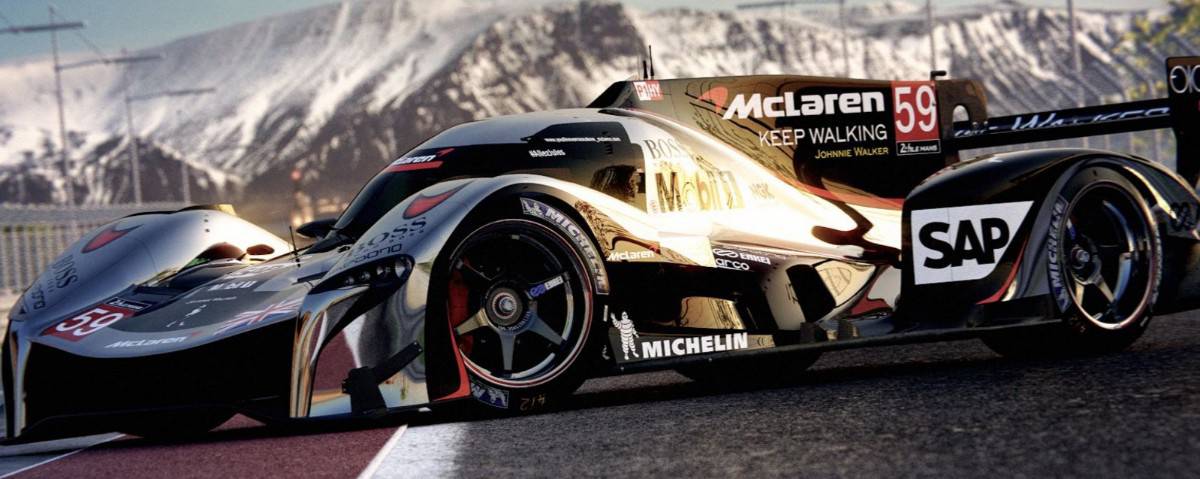 McLaren Racing Limited is a British Formula One team that’s based out of the McLaren Technology Center in Surrey. It’s the second oldest team that is still active after Ferrari. They are also one of the most successful in history with 182 wins, 8 Constructors’ Championships, and 12 Drivers’ Championships.
McLaren Racing Limited is a British Formula One team that’s based out of the McLaren Technology Center in Surrey. It’s the second oldest team that is still active after Ferrari. They are also one of the most successful in history with 182 wins, 8 Constructors’ Championships, and 12 Drivers’ Championships.
The team began in 1963 by Bruce McLaren and won their first Grand Prix in 1968. Their initial success was Can-Am, which they dominated for four years from 1967 through 1971. They also had Indianapolis 500 success in 1972, 1974, and 1976. When Bruce McLaren died in an accident, Teddy Mayer took control of the team and led them to win the Formula One Constructors’ Championship.
Then, in 1981, McLaren and the Ron Dennis Project Four Racing merged. Dennis became team principal and planned a buyout of the original shareholders. Using Honda and Porsche engines, they won seven Drivers’ Championships plus another six Constructors’ Championships. By the mid-90s, Honda withdrew from racing so the team moved to using Mercedes engines. This led to further wins in 1998, 1999, and through the 2000s.
In 2009, Ron Dennis retired as the principal of the team and turned the role over to Martin Whitmarsh, a longtime employee. After the 2013 race years, it was their worst season in nine years so Whitmarsh lost his job. The team decided to go back to Honda engines in 2015 and became McLaren-Honda during the Australian Grand Prix in 2015. That only lasted a couple of years with them agreeing to receive engine supply from Renault Sport during the 2018, 2019, and 2020 racing seasons.
Museum
 The McLaren Technology Center is home to more than 50 years of historical McLaren cars. The oldest is the 1929 Austin 7 Ulster that helped McLaren win his first race back in 1954. There are also more than 500 racing trophies on display, most of them coming from a podium finish in F1, while the rest are from off-track racing, Can-Am, and Indycar.
The McLaren Technology Center is home to more than 50 years of historical McLaren cars. The oldest is the 1929 Austin 7 Ulster that helped McLaren win his first race back in 1954. There are also more than 500 racing trophies on display, most of them coming from a podium finish in F1, while the rest are from off-track racing, Can-Am, and Indycar.
Also located in the UK is a museum, Donington Collections. While this isn’t dedicated to McLaren cars specifically, they do feature some history of the Grand Prix, including an F1 vehicle on display.
There’s also the Bruce McLaren Heritage Center located in New Zealand. It’s dedicated to teaching the history of the racing division and seeks to honor the life of McLaren.
McLaren Financial Services
McLaren Financial Services works with JBR Capital to offer consumers a range of products and solutions when purchasing a McLaren vehicle. JBR Capital Limited and McLaren Financial Services are located in London.
There are options for either new or used purchases from the dealership available. Some of their products include Hire Purchase, Personal Contract Purchase, or Lease Purchase. All of their services are tailored to the individual’s circumstance.
The Personal Contract Purchase allows customers to finance their vehicle with a fixed payment. Once the contract is over, there are three options: exchange the car for another one, repay the last amount and fee to keep the car, or return the vehicle in good condition and within the agreed upon mileage limit.
With their Hire Purchase, customers pay the monthly payments agreed upon. Once that contract is over, they pay the leftover fee and own their car.
The company’s Lease Purchase is similar to the Hire Purchase except the final payment is higher to cover the value of the car once the contract is over. This means that the customer enjoys lower monthly payments when compared to the Hire Purchase, but has to make a larger final payment in order to own the car.
McLaren Dealerships
In 2016, the company added four more McLaren dealerships to the United States. This brought their total up to 23 dealerships in the country. In total, they operate 82 dealerships worldwide. Most of the dealerships are located in big cities including Chicago, Philadelphia, New York, and Los Angeles.
There are also some located in Washington, Georgia, Florida, New Jersey, Massachusetts, and Texas. While other dealerships are situated in Colorado, Connecticut, Arizona, and Virginia.
Across the world, there are three dealerships located in Latin and South America with another nine in the Middle East and Africa. Europe only has 20 dealerships and Asia Pacific contains the most with 27 locations.
 McLaren dealerships also supply owners with a wide range of car accessories to work with their vehicles. These genuine parts improve the aesthetics and also increase performance.
McLaren dealerships also supply owners with a wide range of car accessories to work with their vehicles. These genuine parts improve the aesthetics and also increase performance.
They also offer numerous mechanical services including oil changes. Each dealership is equipped with the staff and equipment needed to ensure vehicles continue to perform at optimum levels. If a customer is in an accident, the McLaren-appointed body shops ensure that it looks as good as new. All their technicians have been through specialized training for structural repair work on McLaren vehicles. They have a team of aluminum welders, as well as specialists in the unique paint technology and minor cosmetic damage.
The dealerships also offer a Roadside Assistance Program to drivers that last for three years or longer. If need be, they even take your car back to the nearest retailer and give customers a replacement car in the meantime.
9 Interesting Facts about McLaren
1 – McLaren won his first race when he was just fifteen. At the age of thirteen, his father purchased a 1929 Austin Ulster for him which he devoted time turning into a race car. Just two years later, he won the Muriwai Beach hill climb with it.
2 – The engine bay of the F1 used to be lined with gold. The F1’s 6.1-liter BMW engine produced a lot of heat. The company lined the bay with real gold foil to reflect the heat.
3 – They do play a role in NASCAR even though they don’t race. They supply numerous electrical parts to the racers. In fact, starting in 2012, the company provided every single ECU in the race. Most of them still use the McLaren ECU during the races.
4 – Bruce McLaren broke Grand Prix records. It started with him winning the American Grand Prix in 1959. He was only 22 years old which made him the youngest driver to win. He held onto that record through 2003 when a Hungarian driver who was just a year younger won the race.
5 – They are cartoonists as well. McLaren produces the cartoon, ‘Tooned.’ It promotes their vehicles and races and features Fernando Alonso, Alexander Armstrong, plus Jenson Button. Episodes only last about three minutes.
6 – They own a catering company. In the 90s, they needed a catering service at their events, so they created their own.
7 – The F1 needed to be made slower to race at LeMans, but it still won.
8 – The company also makes carbon fiber bikes that have been ridden in the Tour de France.
9 – They also make bobsleds. One of them won gold for Great Britain during the Sochi Games.
Frequently Asked Questions
Who Makes McLaren? After a short collaboration with the Mercedes-Benz company, McLaren launched itself as its own manufacturer in 2010.
How Much Does the McLaren P1 Cost? The base price for the 727 horsepower supercar was $1,150,000, but they were only produced in 2014. Several used models can be found for more than $2,000,000.
Where is McLaren Made? McLaren Automotive has their headquarters at the McLaren Technology Center located in Woking, Surrey. This is where they design, manufacture and ship all their vehicles from.
Does McLaren Own Mercedes? No. It was actually Mercedes that had a piece of McLaren for a short time. In 2010, McLaren bought back all of its ownership stake in the company from Mercedes. At the time, they owned 40%.

